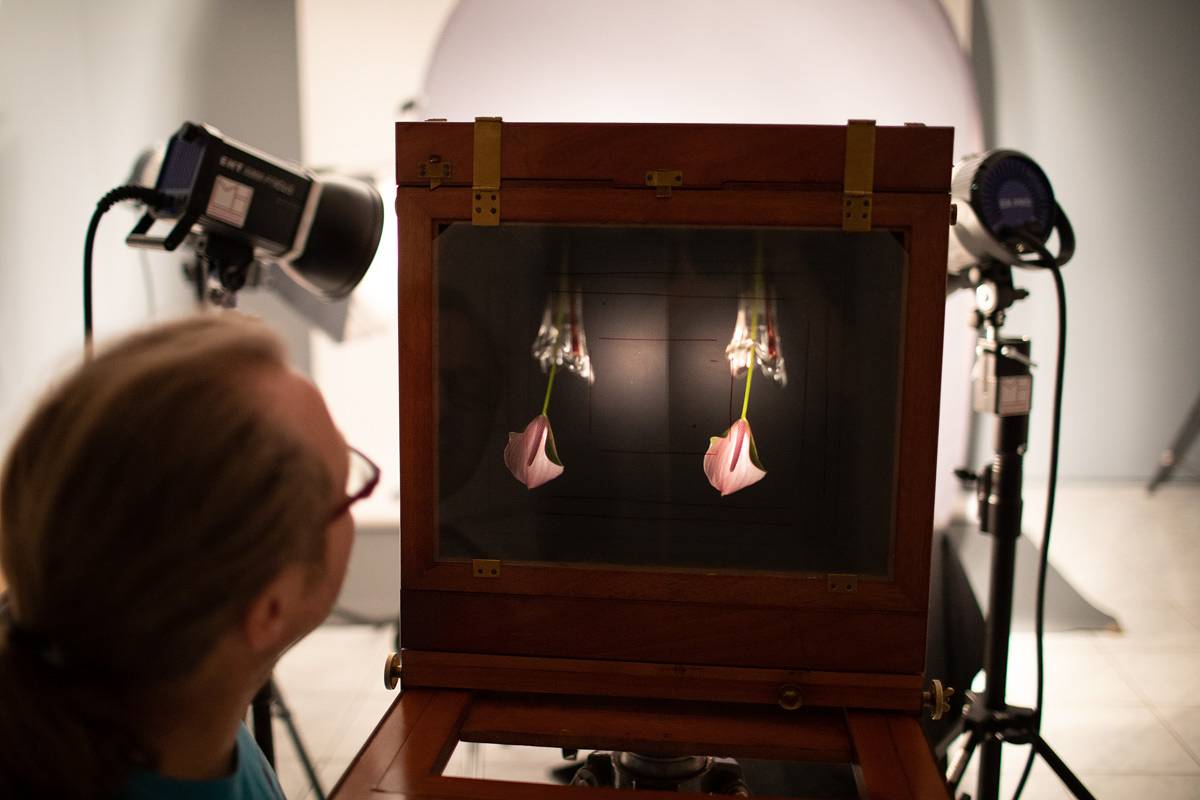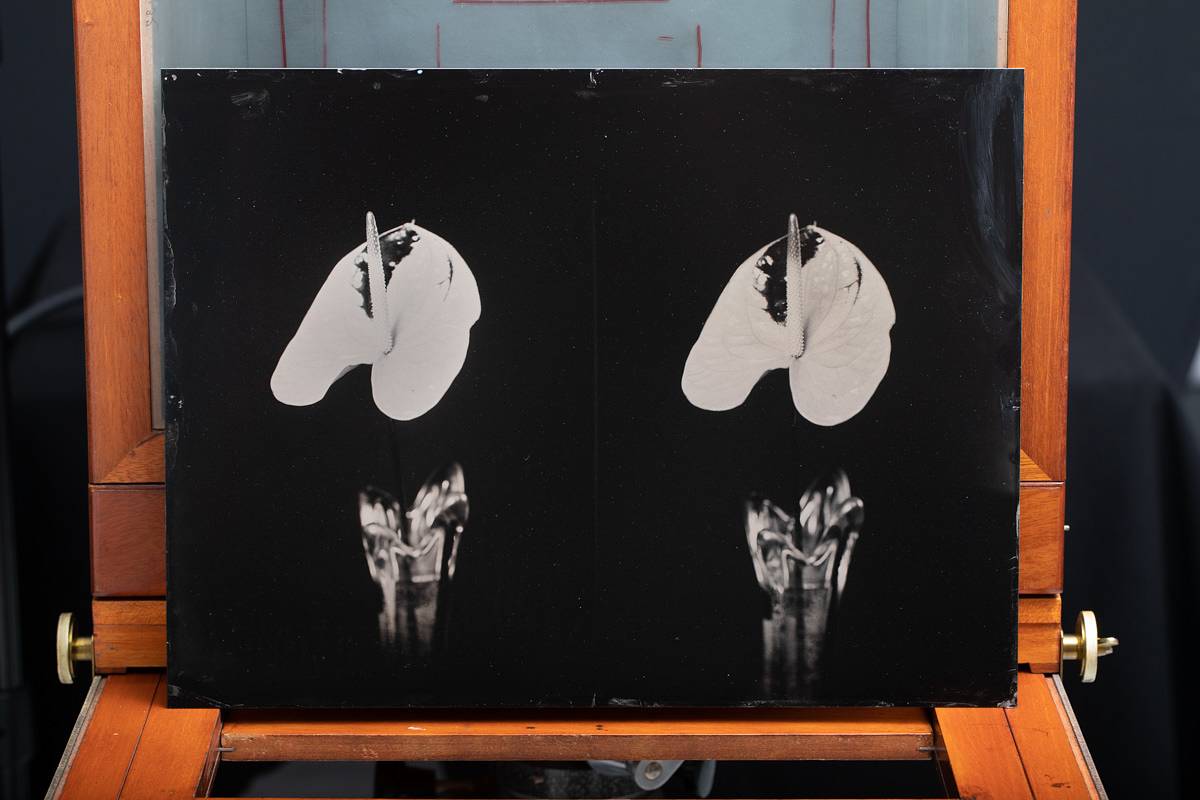Conquering Complexity — an Interview with Large Format Wet Plate Photographer Markus Hofstätter
17 Share TweetThinking big is just the right words to describe the work of photographer, builder, and wet plate enthusiast, Markus Hofstätter. Not only did he undertake a camera build project of great complexity, but he also created wonderful photographs and made 3D images out of them. If there's anything we took away from hearing Markus talk about his project, it would be that hitting a wall in your process doesn't mean the end of things. You just have to push through to get to where you want to be, even if it means taking a little detour.
Hi, Markus and welcome to the Magazine! What do you do and what got you started in photography?
In 2009 I started shooting pool billiard tournaments around the globe and was well known for my images. A few years later, I focused on my local business for portraits, weddings, and virtual tours. At some point, I was bored with digital photography. I just missed working more with my hands. This was why I bought a Mamiya 645E. After I felt comfortable using this camera, I started to do portraits of strangers on the street. It was so addicting that I traveled with my Mamiya around the world to get more interesting faces in front of my medium format camera. At some point, I added a 4 × 5 Linhof Master Technika to my arsenal and shot street portraits with this one too. I still do this today, you can find all the portraits and stories on Street Portraits.
At some point, I wanted to make my own film and that brought me into the wet plate collodion process.
Your large format wet plate project is impressive, to say the least. Where did that idea come from?
It all started when I visited the Die3dimensionale in Vienna. It was an exhibition about stereo photography and holographic photography. At some point, I saw a small stereo wet plate camera there. And it came to my mind, that I could possibly do that myself too. I was not aware of what I would get myself into with that thought.
There's a lot of thought and work poured into that project. How long did it take you to finish it?
It took over six months from when I first thought of doing it, over studying stereographic photography, building and finally taking the first 3D images on a 30 × 40m wet plate.
What inspired you to take on such a unique camera build?
To be able to get a good 3D effect, I wanted to have a variable stereo basis (the distance between the lenses). For macro shots, I needed additionally a tilt mechanism for the lenses. Because of the process, Petzval style lenses were the only way to go for me. That was the technical aspect of the inspiration. My inner self wanted to create stereo wet plates that are bigger than the typical ones you see from the beginning of photography. The idea — to see my wet plate images in 3D was a big motivation and inspiration for this project.
What's the story behind your stereographic camera project?
To be honest, I was frustrated at some point and had to convince my weaker self to go on with it. I was sick of seeing the half-built camera and knowing how much there is still left to do. But in the end, I was happy I did it. Some people ask why I do this big and complicated projects. But people who know me, know I can’t stop what I started. I must finish it. And with this, I’m having a hard time with myself to do something not as good as I would be able to do it. That’s why these big projects are happening so often to me. And that’s who I am.
What would you say was the most challenging part of the build?
I think everybody knows this moment in your life when you do something, and you think this will be done in no time. One week later you realize it’s little more complicated. :)
Nearly every single task that was needed to build this camera was like that. I should have known better, but I’m an optimist. It all started with finding a second lens that focuses on the same spot as mine (I found one that focused similar, not the same). This was essential because a different magnification would produce an unusable stereo image.
Developing and creating the move and the tiltable lens board was another challenge. Making a shutter that adapts to the moveable lens board was also not the easiest task, but I figured that magnets are a good solution for that. To build the inner separation was one of the easier tasks. All the in-between I spent lots of time in hardware stores.
How much time does it take to produce one stereo image?
For two images it takes about seven hours of my time. Why does it take that long? With the moveable and tiltable lenses, there are a lot of possibilities to set the camera up. The farther away your subject is, the more distance you must have between the lenses. If the subject is closer, you may also consider tilting the lenses. Because the lenses are focusing a bit different, I had to use a self-made spacer on one of them sometimes. One of the lenses does expose a little less light to the plate. Because of this, I had to change the aperture on one lens to compensate for that. Therefore, I did a test exposure on a smaller plate before I started the real deal. All of this aside, I had to rethink how I do portraits. I like simple portraits with as little distraction as possible. But this would be boring for a stereographic image. That’s why Clarissa is wearing this wrinkly shirt for example.
I feel confident with the wet plate process but working on 30 × 40cm wet plates always needs extra attention to get them as clean as possible. With all these things, my mind I felt like working at 110%
Why choose 3D images on wet plate?
Because they look awesome. Whenever I come home, I stand in front of the portraits with my 3D goggles. The wet plate characteristic in combination with the 3D effect is very unique and special. Whenever I have customers in my studio, I show them my stereo wet plates. They are always amazed.
Do you have upcoming projects?
Yes, but I don’t want to reveal too much. :)
A YouTuber will visit me soon and we will do a project together. Another collodion wet plate macro (very different to my other two macro projects and the ultra macro video) And a wet plate project with a local artist that will change the wet plate rules.
Besides that, there are lots of workshops coming up and I’m looking forward to them. I enjoy it a lot to show others the wet plate techniques, besides that these are always fun days. Like the one I had recently in Vienna.
We would like to thank Markus for letting us feature his work in the Magazine. If you're interested in his wet plate project, be sure to follow his website for updates.
written by cheeo on 2019-06-12 in #gear #people #videos #large-format #stereo-camera #3d #wet-plate #markus-hoffstaeter


























未有留言